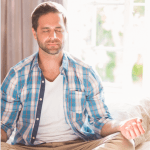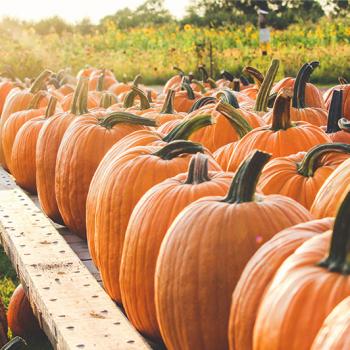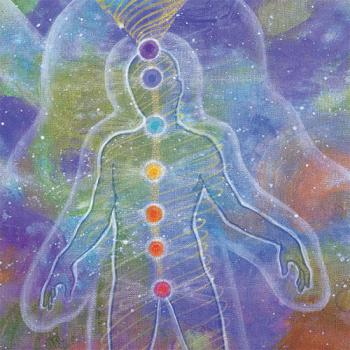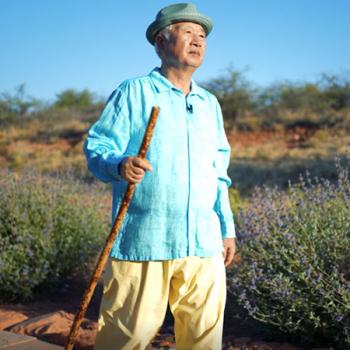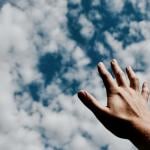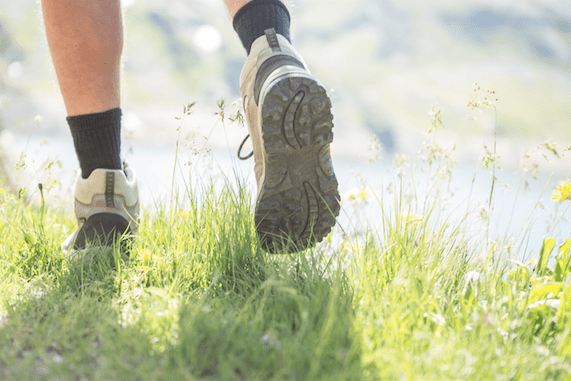
If you view our lives energetically, as I do, this should be no surprise. We are part of the energetic systems of nature and, furthermore, inextricably linked to the energy of the planet as a whole. Separating yourself from nature is not unlike separating yourself from clean water, nutritious food, or fresh air. Without connection to the energies of nature and the planet, we cannot flourish.
To get the most out of our time in nature, though, we have to learn to connect fully to its healing powers. If you go on an hour-long hike, for example, but you mind is still full of worries and your body is still tense, you will get some benefit, but not much. Here are some tips for getting more benefit for your body, mind, and spirit as you walk in the wild.
Longevity Walking
A few years back, I developed a new training method called “Jang Saeng Walking.” I was inspired to develop this walking style after watching how most older people walk in comparison to young people. Also, I noticed that some older people, like an octogenarian friend of mine, keep a healthy walking style. They maintain a “spring in their step,” and their whole lives reflected the same kind of energy – they are physically active, their minds are bright, and they projected open-heartedness to all they encounter.
We all would love to know the secrets of these special seniors, and based on my observations, I suspected that walking habits are an important part of the picture, just as diet and genes might also be. So, I began paying attention to the way energy flows through the body as I walked. At the time, I was recovering from a back injury from a horse-riding accident, so I was able to monitor how walking style affected my healing abilities, too.
I soon discovered that walking posture is very important, and I developed Jang Saeng Walking based on these observations. The phrase Jang Saeng means “youthful longevity” in Korean, and it is used to describe those special older people who we all admire. The method is great for anyone of any age, though, and it can be used in any environment, but it is especially useful for feeling the full energy of nature as we walk. This is how it’s done:
1) Stand up straight with your shoulders relaxed and your arms in a natural position. Place your tongue on the palate of your mouth, and keep your chin neither too high nor too low.
2) Tilt your lower pelvis forward a bit and breathe into your lower abdomen. Your chest should be comfortably open, but not pushed out.
3) As you take a step forward with a straight leg, allow your heel to lightly tap the ground.
4) Transfer your weight forward onto the ball and toes of your foot. (A very important energy point called the Yongchun point is located on the ball of the foot, so you stimulate your energy lines if you focus on stepping here.)
5) As you walk, keep your knees fairly close together and your feet parallel. This can be accomplished by stepping squarely on either side of an imaginary line as you walk.
6) Angle your body very slightly forward and swing your arms freely. Begin with a just a few minutes at a time; as you practice it more it will begin to feel natural.
Opening Your Senses
Probably even more important than your physical posture is your mental mindset as you walk in nature. You must empty your mind of the stressful aspects of your daily life if at all possible. The best way to do this is to switch your focus away from your thinking mind and onto the information coming into your senses. Try to engage with all the different sensations of the five senses – sight, sound, touch, smell, and taste.
We tend to be overly dependent on visual stimuli, so pay special attention to the other three. What do you hear? Perhaps if you listen carefully, you will hear the swooshing of a bird’s wings or the babbling of a distant stream. And what do you smell? You might smell the dank scent of moss growing on trees or the perfume of wildflowers blowing in the wind. On your skin, you might also feel the sun baking on your back or the hardness of a rock beneath your boot. If you pay careful attention, there are even tastes to be experienced as the breeze and the sunshine touches your mouth as you walk.
The important thing is to just experience the senses. Avoid the temptation to name what you are experiencing, such as: “I am smelling an oak tree now. I see a rare flower now.” These are thoughts that bring one back into an analytical state of mind, the mind of comparisons and divisions. Instead, allow yourself to experience it as you might have at two years of age, without judgments and preconceptions. If you can, you will be able to feel the oneness with nature that is already your birthright, and enormous gratitude and joy will come to you without any effort.
The Importance of Walking
I encourage you to walk often. It is great for your physical and mental health, and for your spiritual health, as well. Human beings were meant for walking, and we humans are unique among the other creatures of the Earth in our ability to do so. Numerous studies have confirmed it as one of the best exercises for health and stress relief, and it requires no special gym membership. Even if you can’t get out to a natural setting, make a point of walking every day in your neighborhood if you can.
Understand, also, that walking represents humanity’s special spiritual mission. In Korean traditional Taoist Sundo philosophy, humans are unique due to their “Chun Ji In” status. This refers to the fact that we humans (In) are both of this earth (Ji) and of heaven (Chun). It can be all too easy, as you know, to get wrapped up in the concerns of this human world. Walking is a simple, yet profound way to remind yourself who you really are.


